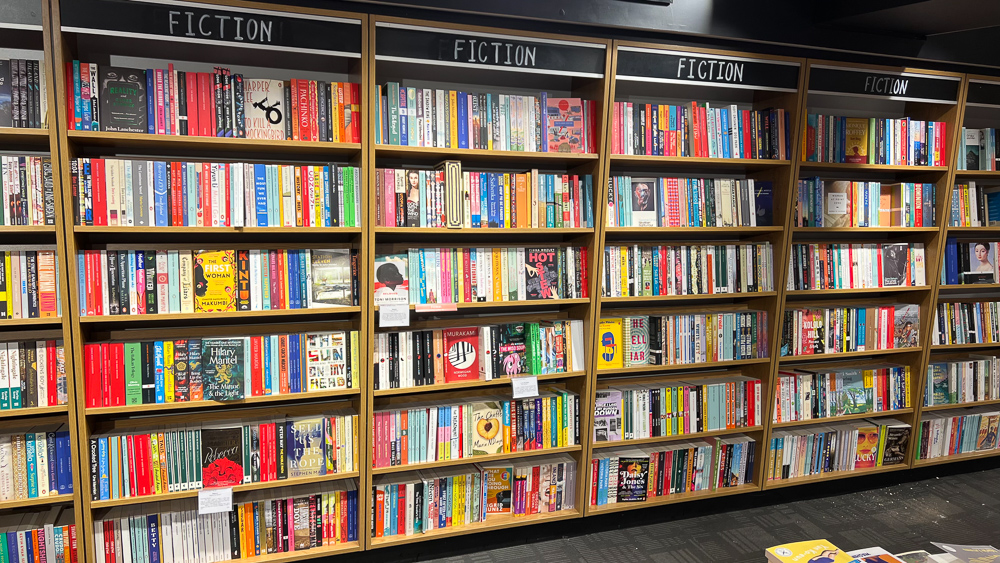How do we organize and understand the world around us?
We do it through classifying objects, which we assign properties to. And then we understand our environment through these objects. We expect each object type to behave in a certain way.
As I look around me, I see a range of objects: people, cars, trees, houses, chairs, railway tracks and so on. I classify and interpret my surroundings in terms of these objects. It is the way I make sense of the world.
It’s how our minds evolved to work. It is much simpler to deal in objects rather than to have to make sense of everything around us anew each time, a task that would be far too computationally challenging for our brains. Look at the behaviour of small children as they learn about the world around them: they spend ages pointing at things and naming them. They are beginning to recognize and understand objects.
Of course, many of these objects would not have existed in the environment in which our minds evolved. From this we can deduce that rather than being hardwired, many of these object classifications arise because we have the ability to learn about objects and create our own classifications.
What does this have to do with wine?
A few weeks ago I took part in a round table discussion titled, ‘what is wine?’ This will be published in The World of Fine Wine, so I can’t reveal what we discussed or the conclusions we came to. But the question got me thinking.
It is possible to define wine legally. But another sort of definition is the one of usage: wine as an object type.
Wine is an alcoholic drink that usually comes in a bottle and which has a strong association with the table. People use wine in a certain way and this defines the object type of wine. To ask, ‘what is wine?’ seems an absurd question to most people, because we all know what wine is.
The bottle is a strong part of wine’s identity. We think of a bottle of wine. Perhaps this is why alternative packaging of wine, such as bag-in-box, has remained quite niche, even though it is very practical.
I picked up this mini-pouch of wine at a local supermarket. It’s interesting that it has a picture of a bottle on the packaging: many alternatively packaged wines seem to do this. It reassures people that the same wine is in the cask as is in the bottle. But does it also demonstrate the significance of the bottle in the identity of wine?
Our parsing of the world around us in terms of object types is very strong, and so maybe this is something that marketeers need to be aware of. We feel uncomfortable when things fall outside our object space. But we can also learn to develop new object types, and so strong design can sometimes pay off if it disrupts these object types to create new ones.
In most cases, wine brands are confined to operating within traditional parameters of what defines wine as an object: it comes in a bottle, is made from grapes, is alcoholic, is red, white or pink, and is used in a certain way. What interests me is whether it would ever be possible to produce a disruptive wine brand that is packaged totally differently, where the alternative packaging is an intrinsic part of the brand identity, thus forcing people to create a new wine ‘object’.
3 Comments on Object types and the identity of wine


Do you know of the Natural Selection Theory wines that came out of Australia? I’d be curious to hear your thoughts on theme once you’ve checked out the details of their program, or if you have already.
Here’s the link to their own website:
http://www.naturalselectiontheory.com/
which seems to be down right now, so here is one of their distributors:
http://www.liquidlibrary.net.au/producers-australia/natural-selection-theory
Here in Spain cheap wine is packed in tetrabrik,table and good wine in bottles. Not even thirty years ago the goatskin was very popular especially in rural areas and wine was bought in bulk from the local bodega which was a fun experience.With EC virtually wiping out bulk sales to the public as unhygienic. I still go with my father in law to get his wine in bulk which he has been buying like that for 60 years. He doesn’t buy bottles..a dying breed I know but there is something basic,earthy about it which brings you closer to the process,land,the people who make it etc
Paddy, at the bodega I’m working out of at the moment, the old men of the village (Morata de Tajuña) still come with their 5-liter plastic mineral-water bottles, to be filled up with wine straight from the tank. It’s a nice ‘human’ moment when you’re filling the container for them, as you can talk about the weather or their aches and pains or whatever!!